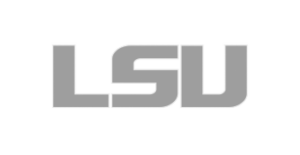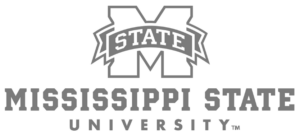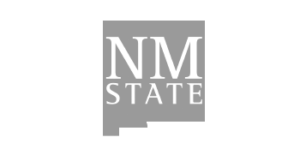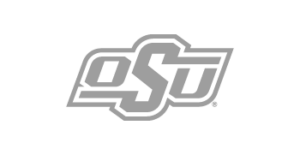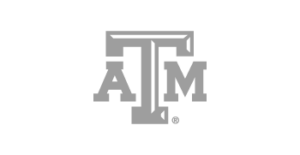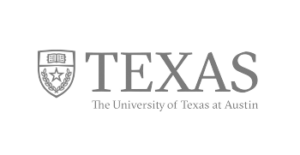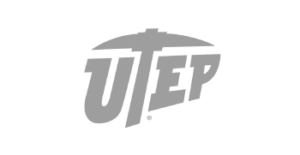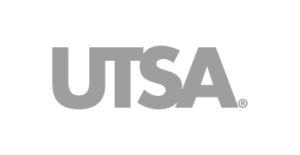TTUHSC researchers are turning “great” research into business ventures that provide life-changing products
By Kara Bishop
Photos by Neal Hinkle
Original article: TTU’s Health Science Center PULSE Magazine
School of Health Professions Associate Dean for Research Phil Sizer, PhD, PT, is passionate about research, obviously, and value in acquiring knowledge and translating it to a product that helps people. The problem? He wasn’t quite sure how to transcend the gap between the two.
“There’s a lot of ‘great’ research out there that makes great papers,” Sizer said. “However, translating the ‘great’ research into a tangible, commercialized product for consumers is an entirely different matter.”
The National Science Foundation (NSF) agrees. When taxpayers asked where their grant money was going and what it was doing for society, there wasn’t really a sufficient answer. To provide answers and bridge the gap between research and commercialization, NSF created the I-Corps initiative in 2011.
THE BOOT CAMP “You want to talk about academics feeling like ducks out of water,” said Sizer, who participated with a team representing TKQuant—a commercialized venture measuring tissue integrity for the obstetrics gynecology and sports medicine industries. “The I-Corps program is intense. They throw you into the ‘business’ world, and you either sink or swim. I compare the boot camp portion to drinking from a re hydrant.”
NSF created a funding mechanism, derived from training models at Silicon Valley where, up to four times a year, they create cohorts of people in teams comprised of a principal investigator, an entrepreneurial lead and an industry mentor. They fund each quali ed team $50,000 to come and work with NSF in a seven-week program, Sizer’s “boot camp.” The teams then travel across the country validating their “customers” by conducting open-ended, qualitative research-based interviews.
The goal is for the data collected to support the original hypotheses made by the team based on what their product can accomplish; thus, crafting a strategy for translating the concept from bench research to market.
“You’re trying to gure out where their pain is and if you have a solution for it—all without biasing them toward your product,” Sizer said. “You leave the product out of it, which is a novel concept to most.”
To be accepted into a national I-Corps cohort and funded, teams have to rst establish legitimacy through a regional I-Corps program, a training taught at the Texas Tech University Innovation Hub at Research Park (The Hub). Teams spend two to three weeks in classes with mentors and I-Corps veterans, followed by a nal session with NSF senior mentors who evaluate their work. While in class, they also conduct local and regional interviews that begin validating their potential customer segment and identifying the ecosystem where their customers operate. Finally, they present their ndings at the end of the regional I-Corps session. If they’re postured well enough, the NSF faculty instructors will endorse their applications to the national I-Corps program, which is funded by NSF.
The TKQuant team application to the national I-Corps program was accepted for the October through December period, committing them to join the Houston I-Corps cohort. They met Oct. 18-20, for a three-day meeting to kick off “boot camp.”
“You go to class (every day) from 7:30 a.m. to 10:30 p.m.” Sizer recalls. “You conduct interviews every day of the meeting and then report back to the NSF mentors where they use different strategies to expose different team members to the business world. They’re doing this to imitate the business/industry environment, thus readying the presentations for the commercial world. It’s similar to the cutting- edge, technology-based industry market, so that’s the intensity they’re trying to emulate. It was a culture shock moving to this model from the academic world. You really have to jump out of your comfort zone.”
Once the rst meeting is completed, teams have roughly six weeks to obtain as many interviews as possible, with the NSF requiring a minimum of 100.
“It’s really all about the number of interviews you get,” Sizer added. “Data collection is very important to establishing a track record of legitimacy for your product. At the time, our team held the record for most interviews conducted with over 155 total interviews collected across 14 cities in the U.S.” (A new team holds the record now—refer to Exhibit A.)
MOVING FORWARD As their national interviewing came to a close, the team traveled again to Houston to meet with the cohort from Nov. 30 through Dec. 1. There they presented their ndings and participated in lectures/discussions with the national I-Corps program director, Steven Konsek, PhD. Finally, the NSF mentors advised them regarding further validation and next steps toward commercialization. This process served as a springboard for seeking commercialization success.
Teams can count on two main mantras of the I-Corps program, Sizer added. One, fall forward: you may feel way off balance, but at least you’re moving forward. Two, get out of the lab.
“You can’t solve your commercial dilemmas in the lab,” he said. “You need to get out and meet with people. You have to immerse yourself in the ecosystem where your customers live.” (Your customers’ ecosystem may be abroad—refer to Exhibit B.)
YOU’RE NOT ALONE Leaving the lab behind is comparative to moving to a foreign country and not knowing the native language. It can be a daunting task without guidance, however, Kimberly Gramm, senior managing director of The Hub, helps faculty members translate their work into this new “language.”
The Hub opened in late 2015 with the mission to “be a major center for entrepreneurialism and innovation serving the Texas Tech University System (TTU) and the West Texas region,” according to their website. The Hub assists in the formation of technology startup companies critically relevant to today’s local and regional economy, with the goal of bringing more industry— jobs, talent and other resources—to the West Texas region. Gramm joined the TTU System in 2016 and believes in the integration of research and entrepreneurship as a way to truly serve surrounding communities. (To see this integration and entrepreneurship put into practice, refer to Exhibit C.)
“Entrepreneurs and academic researchers aren’t so different. They just speak different languages,” she said. “They have more in common than one might think. They’re both trying to make an impact on the world and create something of value. Faculty members don’t often think of themselves as entrepreneurs, which is why I work with them, and the transition process is fascinating to watch. It’s something special.”
Gramm and her team guided TKQuant through the process from start to nish and even helped them after I-Corps to enroll in an accelerator program through The Hub, where they received a $25,000 grant.
Sizer said the support from Gramm and her team has been critical to TKQuant’s success in the I-Corps program and beyond.
“The staff at The Hub are just awesome, and they want to see more of this kind of activity from the TTU System’s research core. They want to make a win-win for all parties.”
THE REWARD While the I-Corps program may be intense and hard work, Sizer emphasizes the reward.
“This program totally realigned and inspired my thinking,” he said. “It was fun. It was hard, but I craved it. In many ways, the program reshaped my world view. It helped me as an academic guy to see things a lot differently and has changed how I spend my day. It was that impactful and transformative for me. I can name six things I’ve done in my life that were at the same level— dissertation defense, getting my clinical fellowship, etc.—and out of all the great events in my life, participating in the I-Corps program is in the top six.
“It’s not even typical research thinking or lineage. It is absolutely revolutionary, so while we may have had to drink from a re hydrant so-to-speak, it was worth it to become part of something that closes the gap between research and viable products that serve society.”
From embryo selection technology to the rst-ever vaccine license agreement for TTUHSC, representatives of our institution are jumping head- rst into the commercialization of their research. Here are abstracts of three such projects and how the researchers are moving their work from “great” papers to valuable services.
TKQuant participated in The Hub’s iLaunch competition in April, winning second place and $3,000. They also received the President’s Innovation Award from TTU President Lawrence Schovanec, PhD, and TTUHSC President Tedd L. Mitchell, MD, for $25,000.
EXHIBIT A: Embryotics, LLC
“I knew that this technology could save producers time and money, I just hadn’t thought past that in terms of providing a marketable product for them to use.”

The Embryotics Team: Charlie Baker, chief scientific officer, Justin Wells, chief technical officer, Robert Rangel, chief executive officer and Cara Wessels, president/founder and chief scientific officer.
Embryo selection technology produces noninvasive embryo and oocyte assessment techniques to determine embryo quality, viability, oocyte competency and cell survival of cryopreservation using a novel speci c gravity device. Embryotics LLC was formed in February 2017 and licensed the following November. There are four patents pending on the technology.
Organization Background: Cara Wessels, PhD, a graduate from the Texas Tech University (TTU) Department of Animal and Food Sciences, conducted research under Samuel D. Prien, PhD, a professor with dual appointments in the TTUHSC School of Medicine and TTU College of Agricultural Sciences and Natural Resources. Her dreams of a career in veterinary medicine quickly changed as she became fascinated with research at TTUHSC. With Prien’s mentorship, a bulky, expensive microscope and a stopwatch, Wessels discovered a method of determining embryo viability. The potential for eld application was there, she just didn’t know what to do with it. Thankfully, The Hub was there to help.
Project Information: The TTUHSC Embryotics team was accepted into the national NSF I-Corps program and currently holds the record for number of interviews obtained (231) program wide, beating schools like MIT.
Impact: The ability to select for embryo quality and viability will reduce the transfer of non-viable embryos into the recipient. This maximizes ef ciency because it will improve the pregnancy rate after embryo transfer and save money by not paying to transfer nonviable embryos, which will not establish pregnancies.
Animals: Using this technology to determine embryo survival of cryopreservation will both increase pregnancy rate of frozen/thawed embryos and maximize the effectiveness of current genetic screening techniques, which require cryopreservation. Additionally, if this technology demonstrates effectiveness in predicting embryo sex, this would be economically advantageous to the producers’ practice (e.g., dairies want females for milk production).
Humans: This technology has the potential to not only save money for human infertility patients but also reduce the stress associated with negative pregnancy results. Safety is also optimized with fewer results of multiple pregnancies. “If we can determine viable embryos, then patients theoretically wouldn’t have to implant multiple embryos at a time, resulting in a possible octuplet situation, as seen in previous years,” Wessels said. “Patients would also have much higher odds for conceiving by implanting one embryo, one time, which would be an incredible thing for both science and our society.”
Contact Information:
Cara Wessels, PhD, Embryotics President/Founder and Chief Scientifc Officer
cara.wessels1991@gmail.com
@Embryotics
embryotics.com
EXHIBIT B: SchistoShield Vaccine

Samra Lazarus, medical research technician, is part of the research team developing the SchistoShield vaccine.
Project Description: Schistosomiasis—a parasitic infection—is endemic
in 78 different countries and contributes to many different diseases and problems. In Africa, schistosomiasis causes liver and spleen disease, bladder issues, and infected women are more susceptible to HIV. In Latin America, the parasite causes hepatic disease. In China, livestock and humans are affected. The vaccine SchistoShield was developed to protect every manifestation of the parasitical infection, both in humans and animals.
Organization Background: TTUHSC’s Center for Tropical Medicine and Infectious Diseases, led by Afzal Siddiqui, PhD, Grover E. Murray Professor, consists of postdocs, assistant professors, medical students and graduate students—some whom have been with him for a decade.
Project Information: On Feb. 22, Siddiqui signed the rst-ever license agreement for TTUHSC on behalf of SchistoShield. The vaccine was signed over to PAI Life Sciences Inc., a biotechnology company based in Seattle, Washington. “I’ve had a collaborative relationship with them for almost
10 years now,” Siddiqui said. “We have obtained funding together, and they have experience in neglected tropical diseases, having developed other vaccines in this area. They also understand that this is not a money-making machine. I wanted it to be a humanitarian effort, and they will honor my wishes in this way.” To maintain the humanitarian effort, SchistoShield has been patented in several countries. The vaccine is scheduled to begin clinical trials within the next year and is “fast-tracked” to become marketable in the next 10 years.
Impact: Vaccinating people and livestock will dramatically reduce potential infection and the rippling effect of other complications and illnesses around the globe. The economical availability of the vaccine will be an exemplary example of the importance of humanitarian service for vaccine licenses as well.

Contact Information:
Afzal Siddiqui, PhD, director, Center for Tropical Medicine and Infectious Diseases
afzal.siddiqui@ttuhsc.edu
ttuhsc.edu/centers-institutes/tropical-medicine-infectious-diseases
EXHIBIT C: BrainScope One at TTUHSC El Paso
Project Description: TTUHSC El Paso is using a cutting-edge biomedical technology, BrainScope One, which has the potential to improve the assessment of brain injuries. The technology has the ability to rule out brain bleeding without a CT scan. The device is currently approved for use in patients 18 to 85 years of age within three days of injury.

A disposable electrode headset is attached to the forehead to measure electrical activity in the brain. The headset is connected to a handheld device equipped with BrainScope One’s proprietary software.
Background of Organization: Edward A. Michelson, MD, professor and chair of the Department of Emergency Medicine at TTUHSC El Paso, began his journey with BrainScope One almost 10 years ago. “I have served on the medical advisory board and have done research with the device for almost a decade,” he said. “When I came to TTUHSC El Paso two years ago, I knew this device could serve this community in a big way.” Michelson informed administrators at one of the university’s two teaching hospitals, University Medical Center of El Paso (UMC), and they became the second hospital in the nation—and the rst hospital in Texas—to integrate BrainScope One technology into their emergency department.
Project Information: The device is simple to use. A disposable electrode headset is attached to a patient’s forehead to measure electrical activity
in the brain and detect if anything is wrong—the electrical waves in your brain ow differently when the head experiences trauma. The headset is connected to a smartphone-like handheld device equipped with BrainScope One’s proprietary software.
Impact:
Economic: BrainScope One’s technology promises positive economic changes for El Paso patients. “Over half of my patients are self-pay,” Michelson said. “So, omitting the need for a CT scan has great signi cance for them.” One CT scan can cost anywhere from $825 to $4,800, (compared to) the BrainScope One test estimated at a cost of $250 to $350 per patient. Also, generally, urgent care centers have to send people with potential brain injuries to the emergency room to be scanned, creating an additional bill. With BrainScope One, patients could avoid the emergency room and the cost of the CT scan itself if it’s determined they have a nonserious brain injury.
Health/Education: The radiation from CT scans is high and poses risks to all, so omitting nonserious brain injuries from exposure is ideal—one CT scan delivers the equivalent of 200 chest X-rays in radiation, Michelson said. “When you have children playing sports, like I do, you want to prevent this exposure to radiation whenever possible,” he added. “The device isn’t FDA approved for this age range (younger than 18) yet, but we are making steps to qualify this group. The impact for student athletes is a great, positive change.” BrainScope One also impacts TTUHSC El Paso’s education and training of residents. “Our university’s emergency medicine residents can now order BrainScopre One tests for their patients as well,” Michelson said. “This gives them valuable training on how to weigh evidence to make informed decisions about patient care.”
Efficiency: Not only do CT scans impact cost and health, but they also consume time. Patients with brain injuries can be quickly scanned with BrainScope One technology by a nurse or paramedic without having to wait for a doctor and without having to rely on intuition or general guidelines. “Other tests can give you false positives because they lean more toward sensitivity than speci city,” said Nick Reiter, MD, rst-year emergency medicine resident at TTUHSC El Paso. When every head trauma patient presents differently and immediate detection of brain bleeding is crucial, guesswork isn’t a desired option. Now, with BrainScope One, “the number of CT scans is reduced, expediting those who actually do need CT scans to the top of the list,” said Eric Johansen, MSN, RN, director of the UMC emergency department.
Contact Information:
Edward A. Michelson, MD, professor and chair of the Department of Emergency Medicine at TTUHSC El Paso
info@brainscope.com
brainscope.com
Rachael Paida and the TTUHSC El Paso Of ce of External Communications contributed to this exhibit.
